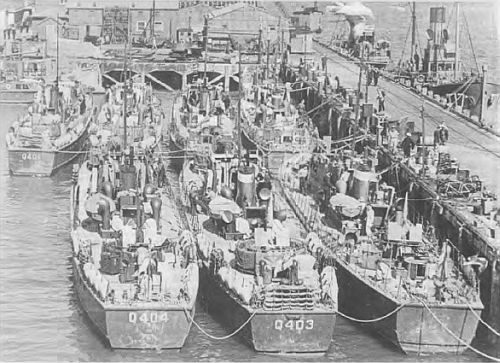- Author
- Cassells, Ken
- Subjects
- History - general, Biographies and personal histories, Ship histories and stories
- Tags
-
- RAN Ships
- None noted.
- Publication
- June 1991 edition of the Naval Historical Review (all rights reserved)
At the beginning of World War II the principal threat to shipping in New Zealand waters was perceived as the German raider, Lessons learned during the Great War pointed to this danger and our best defence, the authorities felt, was the modern, fast, well armed cruiser. In 1939 there were two such vessels in the N.Z. Division of the Royal Navy (became R.N.Z.N. in 1942) – the ACHILLES and LEANDER, earlier versions of the R.A.N.’s trio – SYDNEY, PERTH and HOBART.
When Japan entered the war the sea lanes to New Zealand came within the range of Japanese submarines. Particularly vulnerable were the approaches to our three principal ports – Auckland, Wellington and Lyttelton. Immediate steps were taken to improve their seaward defences by building locally “Castle” class trawler type M/S, A/S vessels, “B” type Fairmile A/S patrol launches and importing from the U.S. H.D.M.L.s also fitted out for A/S work.
The trawler building programme had commenced before Japan’s entry because of the minelaying threat from German raiders – two vessels having already been sunk by German mines in N.Z. waters – and the need to replace requisitioned craft. Planning for the Fairmiles also preceded Pearl Harbour but orders were not placed until the end of December, 1941 – spurred obviously by events.
The Fairmiles were similar to those fabricated in Australia as distinct from those built completely in the Commonwealth. The 112 foot diagonally planked hull was made from New Zealand kauri on U.K. sourced precut frames. Most of the hardware came from Britain as did the 40mm 2 pdr Rolls Royce gun fitted for’d. The 20mm Oerlikon aft, the Y-gun depth charge thrower and the two Hall Scott “Defender” 650 h.p. petrol engines came from the U.S.A. Four Auckland boat builders contracted to build the twelve boats and the first, ML 403, was launched on 29th September, 1942 and the last, ML 411, on 2nd September, 1943.
The Fairmile’s deployment was to have been on outer patrols at the entrances to Auckland, Wellington and Lyttelton harbours.
The inner patrols were the responsibility of the HDMLs which were arriving from North America. Six were to comprise the 80th ML Flotilla at Auckland and the other six of the 81st were to have been divided – four to Wellington and two to Lyttelton.
The first boats commissioned, MLs 403 and 400, were sent immediately to Wellington so that a training programme could commence. The planned ML bases at Auckland and Wellington were not yet ready but at Wellington an A/S School had been established on the foreshore at Petone and the nearby Ford Motor Company assembly plant had set up a Fairmile engine repair and servicing unit where the sea going mechanics could be trained.
When the number of boats at Wellington reached four, the optimum, the remaining eight were concentrated at Auckland. The Lyttelton deployment never eventuated.
As 1943 progressed it became obvious that any submarine threat to N.Z. ports was minimal. There had been at least two intrusions into our waters by Japanese submarines during 1942 but no sinkings and another early in 1943 also without losses. An approach was made to the Americans to see if they could use the boats complete with crews in a forward area. On two occasions Wellington Fairmiles had exercised with U.S. Forces simulating beach landings and the American commanders had been impressed with their efficiency and handling.
Towards the end of 1943 the decision was made to use the boats on screening and escort duty in the Solomons. Since the landings on Guadalcanal, N.Z. cruisers along with those of the R.A.N. had been used in the area and permanently stationed at Tulagi were the five– units of the R.N.Z.Ns 25th M/S, A/S Flotilla. (During 1944 H.M.N.Z.S. MATAI, KIWI, TUI, BREEZE and GALE).

Copied from R.N.Z.N. Official photo.




